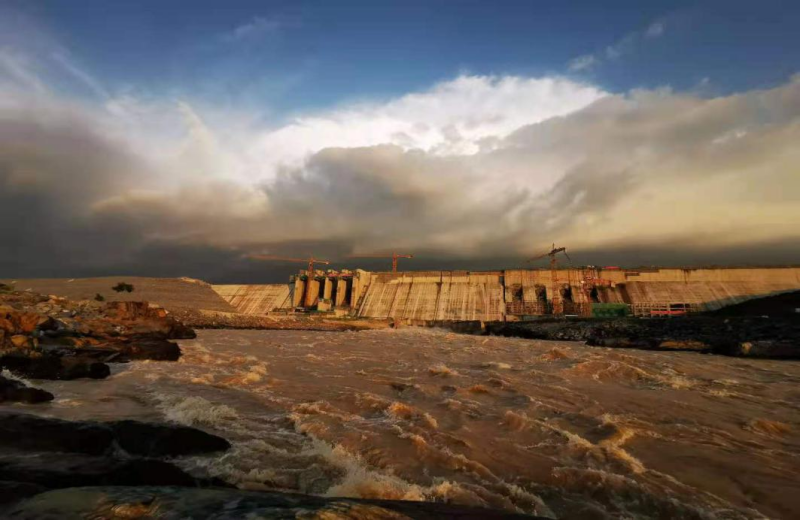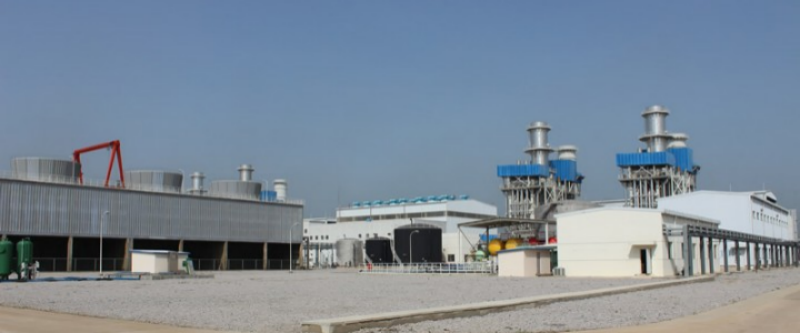Introduction:
POWERCHINA in Nigeria
POWERCHINA's earliest presence in Nigeria can be traced back to 2002 when its subsidiary SEPCOIII started its first project, a 335 MW Gas Turbine Power Plant, in Nigeria, Papalanto. Since then, more and more subsidiaries of POWERCHINA expanded their business to Nigeria.
Over the past two decades, POWERCHINA has demonstrated its strong capability in infrastructure construction, especially in the power sector, through the successful delivery of a series of projects.
In the power sector, POWERCHINA has completed the Olorunsogo Gas-fired Power Plant Phase I and II, the Rehabilitation of the Kainji Hydroelectric Power Plant (1G5, 1G6 & 1G12), the Rehabilitation of Dadin Kowa Hydropower Plant as the sole EPC contractor; we played the role as the key subcontractor in Omotosho Gas-fired Power Plant; we will soon deliver the 700 MW Zungeru Hydropower Plant as the main contractor; and recently, we started the Rehabilitation and Extension of the Kainji Hydropower Plant (1G3, 1G4 & 1G9) to give the plant an extra generation capacity of 305 MW.
In other sectors, POWERCHINA completed the 10.5-km Road Construction in Ogun Free Trade Zone. Currently, we are executing the Rehabilitation and Expansion of the Kano River Irrigation Scheme Dams in Kano State and the Rehabilitation and Expansion of the Dams in Sokoto State under the Transforming Irrigation Management in Nigeria (TRIMMING) Project.
In addition to the projects mentioned above, POWERCHINA has conducted in-depth research and analysis on potential photovoltaic, hydro and thermal power resources in Nigeria and is also exploring various approaches to promote the development of these projects.
Address:
No. 23 John I. Kadiya C1, Asokoro, Abuja
E-mail:
tianyuan@powerchina-intl.com
Key projects:
1. Hydropower Plant
700 MW Zungeru Hydroelectric Power Plant

The Zungeru Hydroelectric Power Project is a 700 MW hydroelectric facility being built on the upper and middle reaches of the Kaduna River in Niger State, Nigeria. It is the biggest hydropower project under construction in Nigeria. When completed, it will be the second-largest hydropower station in the country. The project is estimated to cost 1.3 bn US dollars, making it one of the biggest power projects in Africa to avail preferential loan facilities from the Exim Bank of China.
The project site is 77 km downstream of the existing Shiroro Hydropower Plant, 17 km away from Zungeru Town and approximately 150 km away from Abuja, the capital city of Nigeria.
The main components of the Zungeru Hydropower Project include a roller-compacted concrete (RCC) dam, a clay core rockfill dam with a total length of about 2,360 m, an underground powerhouse located behind the RCC dam, a tailrace channel, and two switchyards on both banks of the river. The crest elevation of the RCC dam will be 233 m, while the maximum height will be 101 m. The dam will create a reservoir capable of storing 10.4 billion m3 of water. The underground powerhouse will be equipped with 4 hydro turbines and generator units rated 175 MW each, with a generation capacity of 2.64 billion kWh per year when completed, which will meet almost 10% of Nigeria's total domestic energy demand. Apart from electricity generation, the project also intends to provide flood control, irrigation, water supply and fish breeding facilities.
The construction of the project was launched in May 2013, and it is expected to be completed by the fourth quarter of 2022.
2. Thermal Power Plant
750 MW Olorunsogo II Power Plant

Olorunsogo II Power Plant is a 750 MW combined-cycle gas-fired power project located in Olorunsogo, Ogun State, Nigeria, 1.5-h drive from Abeokuta, the capital city of the state.
The power plant which was completed in 2014 and commissioned in 2015 is an extension of the 335 MW Olorunsogo Phase 1 Power Plant. The two plants sit adjacent to one another and were both constructed by SEPCOIII of POWERCHINA. Phase II is a combined cycle power plant consisting of 4 gas turbines (GE Frame 9E), 4 heat recovery steam generators, and 2 steam turbines. The generating capacity of the two phases combined was one-sixth of the available power generation capacity at that time, giving a huge boost to the power grid and social and economic development.